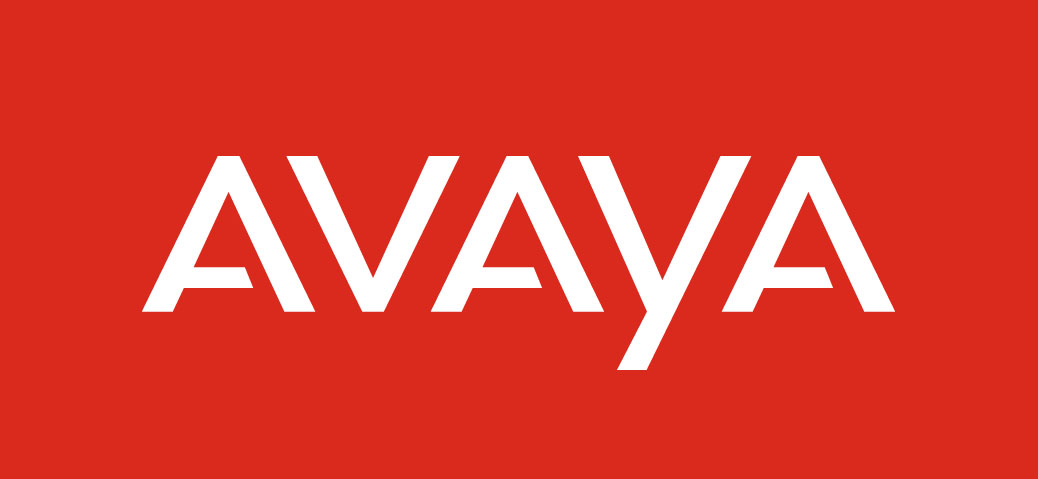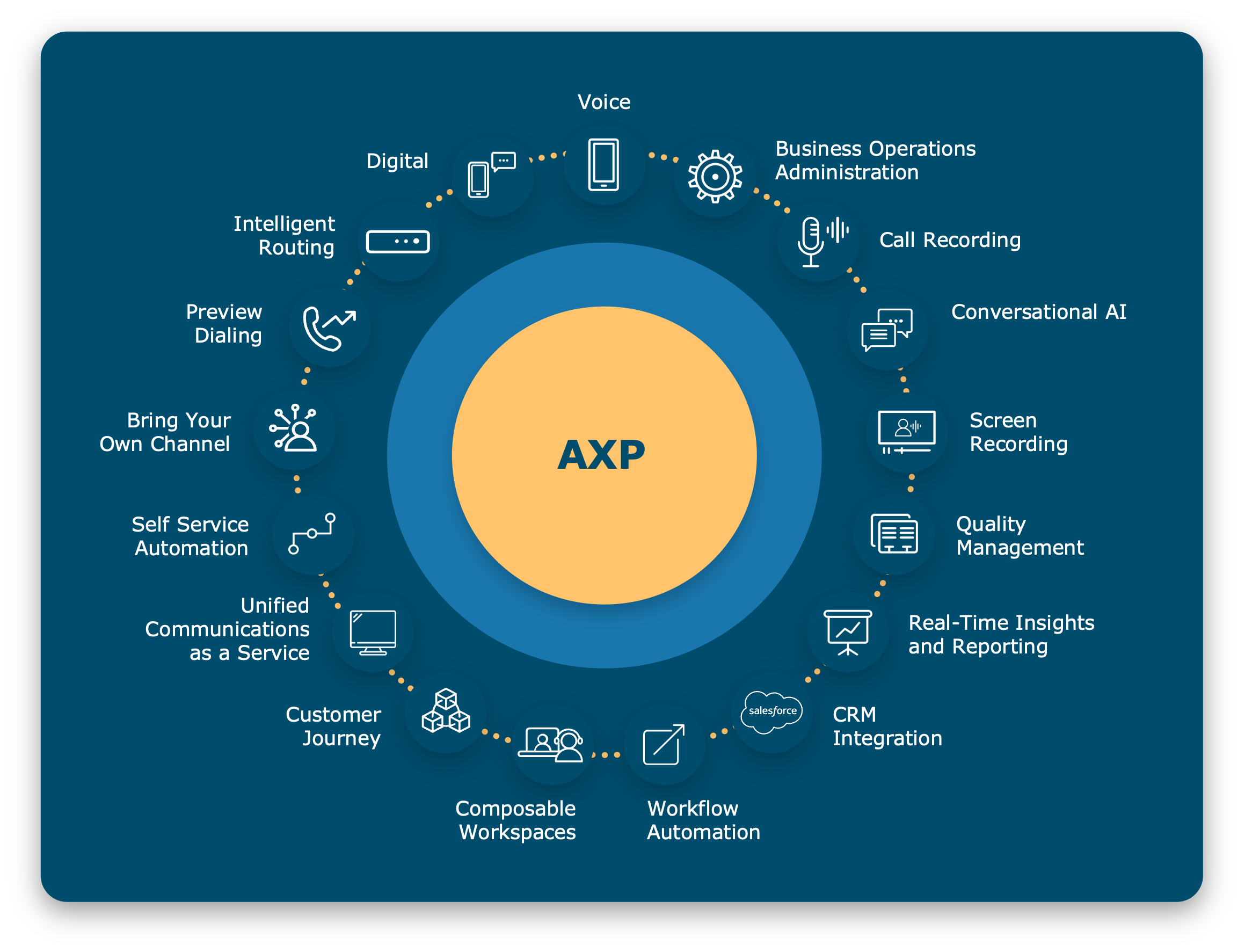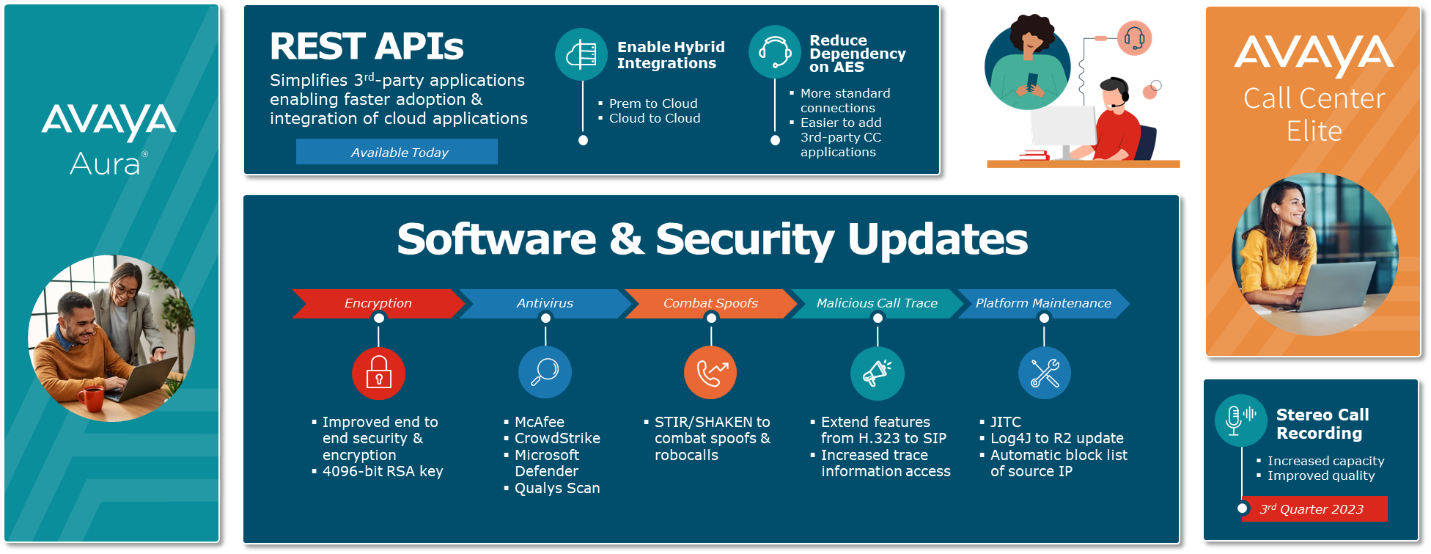At its Engage event in June, Avaya declared customer experience (CX) its North Star after emerging from Chapter 11 bankruptcy in May. The company shared its strategy for winning in the CX marketplace and providing its premises-based PBX and contact center customers with options to remain on-prem, use hybrid solutions, and/or move to a cloud option. The company also implied that there may be a deepening partnership with Microsoft.
Avaya snapshot
Before entering bankruptcy for a second time in February 2023, Avaya was laden with $3.9 billion in debt. From a market penetration perspective, Avaya was the leading provider of on-premises contact centers and the number two vendor in the on-premises PBX market with a 13% share. The company had a negligible presence in the contact center as a service (CCaaS) market, and it partnered with RingCentral to provide a unified communications as a service (UCaaS) offer.
Upon emerging from bankruptcy in May 2023, only three months after entering, Avaya had shed $3.75 billion in debt during the process. The company was capitalized with an additional $650 million in long-term debt, leaving Avaya with $800 million in debt financing.
Post bankruptcy, Alan Masarek, Avaya’s new CEO, has focused the company almost exclusively on the customer experience (CX) market. During the two-day Engage event, Avaya covered key areas articulated below.
The CX TAM
At Engage 2023, Masarek stated Avaya’s belief that the 2029 total addressable market (TAM) for CX will be $40 billion and that between 2023 and 2029, this market will expand with a compound annual growth rate (CAGR) of 16%. (This CAGR implies the 2023 market TAM is $19 billion).
The implication is that the CX market is growing robustly, and Avaya can expect significant CX revenues as this market expands.
Avaya’s rationalized product portfolio
Understanding Avaya’s product portfolio is key to understanding the company’s current go-to-market strategy. Under Masarek’s leadership, the product portfolio has been rationalized, with about half of its solutions being fully deprecated.
The surviving solutions are as follows:
On-premises solutions
1. Avaya Aura
- Avaya Aura is Avaya’s flagship on-premises PBX solution for mid- and large-sized customers. It supports large and complicated communications environments and is often customized for workflows unique to those customers.
- Aura is only deployed within a VMWare environment.
2. Avaya IP Office
- This is an on-premises PBX offering for the SMB market.
3. Avaya Call Center Elite
- Call Center Elite is Avaya’s on-premises contact center. Elite is built on top of Avaya Aura.
- Avaya has two additional on-premises contact centers: Aura Contact Center (obtained through the Nortel acquisition), and Avaya Contect Center Select, which is designed for SMB customers. Although Avaya Aura Call Center and Avaya Contact Center Select are not end of life, Elite is where the contact center innovation will be going forward. (Contact Center Select is not in the above graphic because the company is emphasizing Call Center Elite and Avaya Experience Platform.)
Hybrid solutions
4. Avaya Enterprise Cloud
- Avaya Enterprise Cloud (AEC) is Aura running as a dedicated instance (single tenant) managed service in the Microsoft Azure cloud. Even in the cloud deployment, it runs in a VMWare environment. This is a subscription-only solution, and all customers will automatically be updated to the latest version of Aura: multiple versions of Aura will not be supported, which resembles how cloud UCaaS solutions operate.
- Customers running Call Center Elite can also migrate to Avaya Enterprise Cloud and run Elite as a dedicated-instance, managed service running within the Azure cloud.
Cloud solutions
5. Avaya Experience Platform
- Avaya Experience Platform (AXP) is Avaya’s emerging flagship cloud-based contact center. Avaya will actively try to migrate customers to this solution over the next few years. This solution was launched just last year and is a modern multitenant contact center built for cloud and managed by Avaya. It is available only in the Azure cloud.
- For large customers or customers with unique requirements, AXP can be deployed as a dedicated instance.
6. Avaya Cloud Office by RingCentral (ACO)
- This is the RingCentral UCaaS offering sold by Avaya and its partners and agents. It is Avaya’s answer for smaller customers who want a cloud PBX solution. Avaya has unique integrations with RingCentral, so certain Avaya phones work with Cloud Office.
- ACO remains Avaya’s only multi-tenanted UCaaS solution to its on-premises installed base totaling tens of millions of users worldwide.
Avaya’s Position on PBX, UCaaS, CCaaS, CPaaS, and AI
Understanding Avaya’s position on the PBX and UCaaS markets and how it sees the impact of artificial intelligence on the contact center provides helpful insights when examining Avaya’s investment and customer migration strategy.
- Masarek and Avaya believe AI is leveling the CCaaS playing field. Consequently, even though Avaya is late to having a multitenant CCaaS offer, the company believes the influence of the vast array of new AI functionality reduces the advantage for longtime CCaaS competitors, since the AI functionality is revolutionizing CCaaS for everyone. Avaya intends to compete by providing rich and extensive AI capabilities in its AXP CCaaS offer.
- Avaya believes the PBX market is mature with little remaining opportunity for disruptive innovation. However, the company is continuing to invest in Aura, providing regular updates with a defined roadmap; Avaya is also working to make Aura deployment easier and to better support the product so that customers can realize lower operating costs. For customers that want a cloud-like Aura service, Avaya provides a hosted and managed service, Avaya Enterprise Cloud.
- According to Masarek, the UCaaS market will soon become a commodity market with little innovation and differentiation. Hence, Avaya has no interest in developing its own UCaaS solution that will be commoditized as soon as it is created. However, some Avaya customers want a multitenant UCaaS solution; therefore, Avaya looks to RingCentral for this capability. Avaya said this deal is like it is “renting” a UCaaS solution, which it can simply resell and generate immediate revenue until RingCentral and its competitors become commoditized.
- Although Avaya indicated that UCaaS is becoming commoditized, it believes that UCaaS and CCaaS, when merged, are compelling because it gives organizations a single platform for both voice and contact center functionality. Therefore, Aura functionality will gradually be added to AXP so that when customers migrate to AXP, they will get both UCaaS and CCaaS capabilities. However, it will take several years for Avaya to migrate and merge the Aura capabilities into AXP.
- Avaya has discontinued all CPaaS pay-as-you-go service, believing it is a better option for the company to provide a complete contact center solution than to allow others to cobble together contact center functionality using Avaya’s contact center API capabilities. That said, Avaya will still have APIs for its customers for third-party applications (i.e., Cognigy, Journey, and other Avaya-approved partner apps) and some AXP functionality. The cost for access to Avaya’s Hybrid Cloud Services is $4,000 per month, which opens up over 50 APIs to customers. The $4k/month fee provides unlimited access to three APIs and gives customers up to four hours of Avaya consulting per month. After three APIs are used, additional APIs can be leveraged at $1K/API/month.
- Avaya believes customers with large and complex PBX and contact center estates do not want to disrupt these operations. Consequently, Avaya targets these customers with a message of “innovation without disruption.” This means that customers can continue using their on-premises Avaya solutions, and those customers who want to take advantage of the new AI CX functionality in the AXP cloud can do so via REST API calls.
These fundamental principles and Avaya’s belief in a burgeoning and nascent AI-enabled contact center market drive Avaya’s strategy.
Avaya’s customer migration strategy
Rationalizing the product portfolio and focusing on CX makes Avaya’s customer migration strategy straightforward. The company’s sales motions are:
1. Continue to sell on-premises
- Avaya does not require customers to move to the cloud. If they want some of Avaya’s CX cloud functionality for an on-premises contact center, they can get these via API calls
2. Sell cloud
- This would be for customers who are ready to buy AXP now.
- Some Aura customers may want a hosted and managed PBX solution through AEC services
3. Migrate the base to cloud
- Never trigger a product disruption that disrupts the customer.
- Bring in disrupting technology (new features) one bite-size piece at a time.
The migration paths are as follows:
|
Current solution
|
Migration path
|
|
IP Office
|
Avaya Cloud Office by RingCentral
|
|
On-premises Aura PBX
|
Avaya Enterprise Cloud (AEC)
or
Avaya Cloud Office by RingCentral (for smaller or less complex Aura deployments)
|
|
On-premises Call Center Elite
or
On-premises Aura Contact Center
|
Avaya Experience Platform
|
Avaya and Microsoft
Reading between the lines, there seems to be an attempt within Avaya to position the company closer to Microsoft. Here are a few snippets obtained about Avaya and Microsoft at Engage 2023.
1. Avaya CEO Masarek believes Teams is becoming the enterprise OS.
- He also believes Microsoft Direct Routing is fleeting. Masarek didn’t elaborate on this point, but it leads to the next one.
2. Avaya may pursue a more robust telephony integration with Teams.
- This seems to reflect the days of the Nortel/Microsoft partnership in 2006, where “Nortel and Microsoft will transition traditional business phone systems into software, with a Microsoft unified communications software platform and Nortel software products to provide further advanced telephony functionality.”
- Avaya seems to hint that it may be working on this type of deeper telephony integration with Microsoft, which will be deeper than the integrations into Teams currently offered by most PBX vendors.
3. Avaya is working on integrating AXP into Teams. Teams and AXP users should soon expect Avaya AXP to appear on the left rail in the Teams interface.
One could speculate that these initiatives may be an effort to get Microsoft to buy Avaya and AXP, thus allowing Avaya’s investors to recover some of the money they lost during the bankruptcy. Microsoft does not presently own a contact center, and its Teams Phone System is less functional than Avaya Aura.
Even if Microsoft does not buy AXP, Avaya has much to gain by aligning with Microsoft. Microsoft Teams has more than 300 million users, and over 50% of companies use Microsoft as their key UCaaS provider. Many of these firms would want to leverage a CCaaS solution that is tightly integrated with Teams. Furthermore, Microsoft is investing heavily in AI, making it one of the most advanced AI solutions providers on the market, and AXP could piggyback on Microsoft’s AI capabilities delivered through the Azure cloud.
Avaya and RingCentral
During the bankruptcy, Avaya renegotiated the terms of its partnership with RingCentral. In the initial agreement, Avaya resold RingCentral as “Avaya Cloud Office by RingCentral,” but the sales were on RingCentral paper. This caused angst in the channel because Avaya channel partners feared customers would ultimately leave and subscribe to RingCentral directly. Hence, many channel partners did not promote Avaya Cloud Office.
In the renegotiated agreement, Avaya and its partners can sell RingCentral on their paper, helping partners and Avaya to maintain their relationships with the customers. Although not well publicized, Avaya agents can continue to sell Avaya Cloud Office under the initial model on RingCentral paper.
Contact center competition and coopetition
Presently, Avaya and RingCentral compete in the contact center market since RingCentral resells the NICE In-Contact contact center solution, and it just launched its own RingCX contact center.
Avaya Cloud Office by RingCentral has only a SIP integration with Avaya’s AXP contact center. Avaya is working on enabling Avaya Cloud Office (RingCentral) integration with the Avaya AXP cloud-based contact center via Avaya Experience Platform Connect. AXP Connect is a mechanism that allows organizations to leverage their existing on-premises infrastructure for voice routing and call handling while accessing the omnichannel capabilities of AXP, including WebRTC voice, AXP Workspaces desktop, AI-based noise removal, etc.
Avaya Spaces and video devices
Avaya is discontinuing active development on Avaya Spaces, its UC meetings client. Spaces has been placed in a support mode, with only limited enhancements being planned based on some customer feedback. Avaya will still offer Spaces for companies without Microsoft Teams, again implying potential for a stronger Avaya-Microsoft relationship.
Avaya has decided to continue manufacturing some video devices, although the company also stated that it would pursue more of a partnership model with other video device manufacturers in the future.
A view on Avaya: Avaya’s fluid CX TAM estimate raises some concern
At Avaya Engage 2023, CEO Masarek publicly stated Avaya’s belief that the TAM would be $40 billion by 2029. However, in February 2023, four months earlier, he had projected a CX TAM of $46 billion by 2026. Furthermore, in a slide presented at Engage by three Avaya VPs, the 2029 TAM was estimated to be only $33 billion by 2029.
Avaya is likely stating these numbers to project confidence that its CX-focused strategy is sound and that the market is large enough for Avaya to have significant revenue opportunities. The differences in these publicly stated TAMs, however, raises some yellow flags in Avaya’s strategy.
CX as North Star is logical, but will it sustain Avaya?
Avaya’s CX imperative is the best alternative available to the company, given the trends in the markets it competes in.
Trying to gain more share in a shrinking on-premises PBX market is not a long-term success strategy for Avaya. Furthermore, Omdia concurs that the UCaaS market, while still growing, is becoming less differentiated and will commoditize. When this happens, prices will compress. We have already seen this in Cisco’s Webex Suite, which includes Meetings and Calling: it is selling for $11.95 list, and Cisco indicates the street price is between $6 and $8.
As greenfield opportunities for UCaaS dry up and competition heats up, pricing must fall, harming companies like 8x8, RingCentral, and others who require relatively high pricing to sustain themselves. As a comparison, RingCentral and 8x8 have kept pricing relatively constant, Zoom did a price increase which caused many customers to go from a month-to-month to an annual subscription, while Microsoft recently raised its prices and is creating new premium SKUs to increase ARPU. Avaya would have difficulty competing in such a market.
Avaya’s last quarterly revenue release in June of 2022 indicated that the company had approximately $750 million in annual recurring revenue (ARR) for “OneCloud” (Avaya’s previous branding for AEC, AXP, and Avaya Cloud Office by RingCentral). Competitors claim they have wrested from Avaya customers over $1 billion worth of recurring revenue since June of 2022. Although Avaya customers are quite loyal, this claim would represent a massive hit regarding the annual recurring revenue opportunity lost. For reference, in fiscal 2021, Avaya had gross revenue of $2.9 billion and operating income of $1.7 billion.
Avaya has approximately 6 million contact center seats today, most of them on-premises, and approximately 4 million of these are still generating revenue under maintenance contracts. We estimate that Avaya also has about 50 million on-premises PBX seats, only some of which continue to generate revenue.
What happens to these customers given Avaya’s trajectory? Does this strategy make sense to them? Time will reveal the answer.
Omdia estimates that a CCaaS seat generates an average annual revenue of approximately $1,320/seat. If Avaya could migrate half of these to AXP, say 3 million seats, it would generate $3.96 billion just in AXP revenues.
If only 10 million on-prem PBX customers migrate to Avaya Enterprise Cloud, at an annual ASP of say $84, then the company would generate an additional $840 million.
So, if these AXP and AEC revenues are added to the income from on-premises maintenance revenue, and Avaya professional services (now branded Avaya Customer Experience Services), the company could be on track to generate approximately $5 billion annually. Avaya could sustain itself quite well at this revenue level, including payment on its debt.
Avaya is banking both on customer loyalty and on its ability to gain traction quickly in the CCaaS market. In 2022 CCaaS comparisons, Avaya is not even listed; consequently, it will have to move quickly to fix this massive gap in its product portfolio. A key question is whether Avaya can implement the new AI capabilities any better than its CCaaS competitors, thus allowing its fledging cloud-based solution to disrupt and displace them.
Another unknown is how difficult it will be for customers to migrate to AXP. Avaya’s strategy is to innovate without disruption, but ultimately customers will need to migrate and disrupt some aspects of how they do things now to take full advantage of what AXP will offer.
Omdia is cautiously optimistic that Avaya will be able to pull off a successful reboot after a difficult and tumultuous year.
Want to know more?
Check out Omdia’s Unified Communications & Collaboration Intelligence Service.
Also check out these articles:
- The Latest Avaya News: Avaya provides customer experience solutions ranging from contact center solutions to enterprise communications equipment for collaboration.
- 5 Avaya News Takeaways from Gitex Global: The company’s restructuring have not affected its customer base strength.













